At Belovedsaffron.com we believe that every chef has something unique and delicious to share with their taste buds! If you have any special recipes or would like to contribute an article for our blog section, please don’t hesitate to contact [email protected].
We are devoted to promoting sustainable eating practices that respect cultures worldwide and inspire us with new flavors each day. Let’s work together towards bettering the Earth while enjoying scrumptious dishes!
For now, love yourself and enjoy this one ...
Now love yourself and enjoy this one ...
Savor the simple pleasure of this savory and effortlessly delicious Potato Frittata.
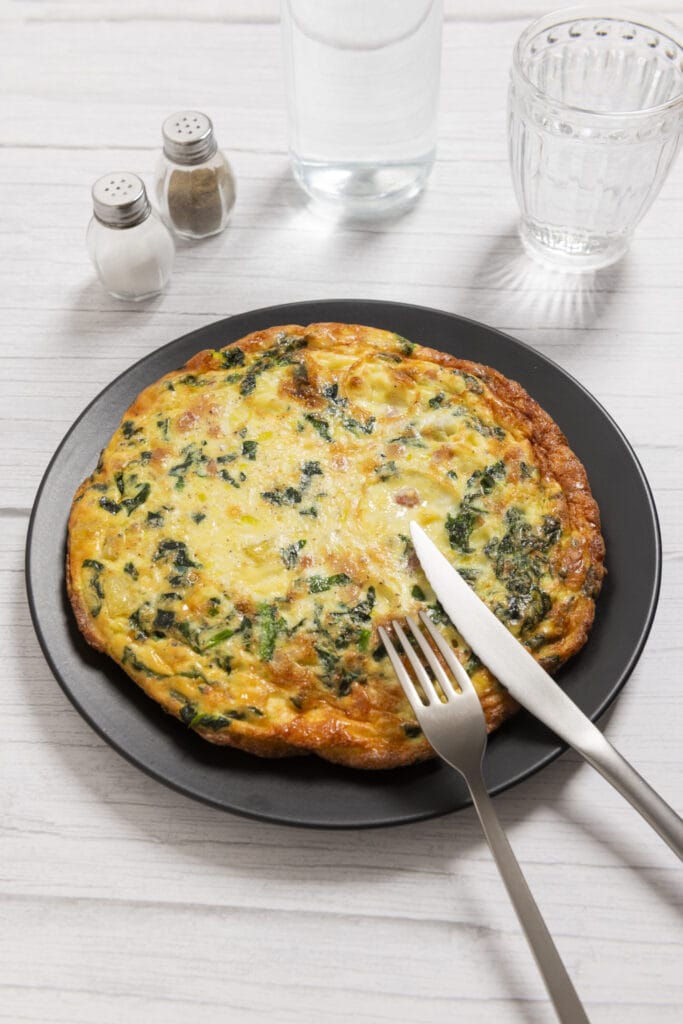
Table of Contents
The first time I had a frittata I was in my 20s. We were having a Mother’s Day brunch buffet at a local botanical garden, and my, what a spread they had. I’m partial to omelets, so naturally, I gravitated to the omelet bar. That’s when I saw the frittatas. They were layered on a three-tiered tray. Needless to say, I didn’t order an omelet. Instead, I snagged three frittatas—sharp cheddar, caramelized onion, and a gyro frittata with feta cheese. And yes, they were delicious. For the longest time, I assumed frittatas were difficult to make, but you know what I discovered? They’re not. I think you’ll find my potato frittata is easy to make and even easier to devour.
This savory dish is ideal for Easter brunches, Mother’s Day, or any time you’re feeding a crowd. Even my picky kids enjoy my potato frittatas. There’s a subtle buttery taste punctuated by the smoky crisp bacon, the tangy dijon, and the nutty gruyere cheese. I toss some fresh spinach for a bit of color and fiber, which contrasts nicely with the green onions. All this to say, there’s a lot going on in this frittata. They taste so wonderfully complex for a recipe that requires you to quite literally throw everything together.
Is Potato Frittata Healthy?
Everyone seems to have a different opinion on whether eggs are healthy or not, and frankly, I’m tired of it. From what I’ve read, eggs, especially the yolks, are a powerhouse of B vitamins and carotenoids, which help improve eye health. That sounds healthy enough to me! You know what else can also be healthy in moderation? Cheese! In fact, gruyere cheese contains probiotics, which help reduce inflammation and digestive issues. It’s also high in protein and calcium. So, is my potato frittata healthy? I sure think so. However, if you’re concerned about your cholesterol count, you could always use egg whites in this recipe instead. And I get that Gruyere isn’t for everyone, so feel free to swap with a cheese of your choice.
The case For Cast Iron
Nonstick pans have their place in the kitchen, but I prefer stainless steel and cast iron pans, especially for dishes like potato frittata. Cast iron is especially great because it retains and distributes heat more evenly than nonstick pans. They’re durable, too, and will last you a lifetime. Just make sure to season your pan first. If you’re not sure where to start, there are loads of videos on YouTube that can help you on your cast iron journey!
INGREDIENTS
- 2 strips thick-cut bacon, diced (optional for vegetarians)
- 2 medium Yukon gold potatoes, peeled and ½-inch diced (about 2 cups)
- 8 large eggs
- 3 tablespoons nonfat milk or milk of choice
- 1 teaspoon Dijon mustard
- 1/2 teaspoon kosher salt
- 1/4 teaspoon black pepper
- 1/3 cup shredded gruyere or similar melty cheese
- 1 cup fresh spinach, roughly chopped
- 1/2 cup green onions, finely chopped (about 3 medium)

INSTRUCTIONS
Prep and Preheat
Get your oven ready and preheat to the right temperature for baking the frittata.
Crisp the Bacon
Cook the bacon until it’s perfectly crispy, then set it aside on a paper towel.
Potato Time
Use the bacon’s flavor to cook the potatoes until they’re just right.
Mix It Up
Combine the eggs, milk, and seasonings, then stir in the cheese for extra flavor.
Greens and Onions
Add fresh greens and onions to the mix for a pop of color and nutrition.
Layer It
Make sure everything in the skillet is evenly spread out before adding the eggs.
Egg Pour
Gently pour the egg mixture over the skillet, ready for baking.
Bake to Perfection
Watch the frittata as it bakes to ensure it sets just right.
Serve and Enjoy
Cut into slices, serve up this delicious meal, and DEVOUR!
Devour!

FAQs & Tips
After making the frittata, you can transfer it to a pie plate or container and store it in the fridge. If covered, your frittata should be good for up to five days, but I’d recommend enjoying this dish right away. That said, it does heat up well in the oven. Just put it on a baking sheet or oven-safe pie plate and cook for about 10 minutes at 300 degrees.
Generally, quiches have a crust base, while a frittata never has a crust. Quiches also tend to be more creamy or custardy with their fillings, while frittata have a more omelet-like texture. On a personal note, I also feel like quiches are more challenging to make, especially if you make the crust from scratch.
If the center of the frittata doesn’t jiggle when you shake the pan, you know it’s ready!
Sweeter onions like Vidalia or Yellow could also work for this recipe. And if you prefer a more pungent taste, red onions add a great contrast to the gruyere cheese.

Serving Suggestions
Serve this potato frittata with all your brunch favorites. I enjoy pairing it with something sweet, like french toast or blueberry pancakes. Even a slice of chocolate banana bread works for me. Or if savory is more your thing, this low-carb sausage casserole could do the job, too.

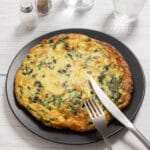
Potato Frittata
Ingredients
- 2 strips thick-cut bacon diced (optional for vegetarian)
- 2 medium Yukon gold potatoes peeled and ½-inch diced (about 2 cups)
- 8 large eggs
- 3 tablespoons nonfat milk or milk of choice
- 1 teaspoon Dijon mustard
- 1/2 teaspoon kosher salt
- 1/4 teaspoon black pepper
- 1/3 cup shredded gruyere or similar melty cheese
- 1 cup fresh spinach roughly chopped
- 1/2 cup green onions finely chopped (about 3 medium)
Instructions
- Preheat your oven to 350 degrees F with a rack in the center position.

- In a large ovenproof skillet, cook the bacon over medium-low heat until crisp, then transfer to a paper-towel lined plate to drain.
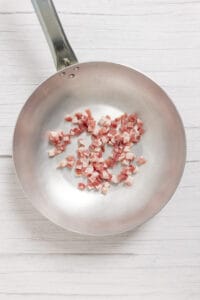
- In the same skillet with the bacon fat, cook the diced potatoes until tender and browned, stirring occasionally.

- Whisk together eggs, milk, Dijon mustard, salt, and pepper in a bowl. Mix in the shredded cheese.

- Add the spinach and green onions to the skillet with the potatoes, stirring until wilted.
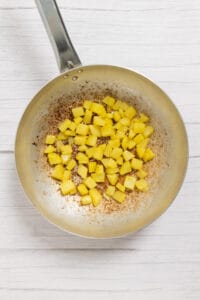
- Spread the cooked bacon, potatoes, and greens in an even layer in the skillet.

- Pour the egg mixture over the skillet contents, smoothing the top.

- Bake in the preheated oven for 15 to 20 minutes until the eggs are set. Serve immediately.

- DEVOUR!
Nutrition
The post Potato Frittata appeared first on Food Faith Fitness.
References:
By: FoodfaithfitnessTitle: Potato Frittata
Sourced From: www.foodfaithfitness.com/potato-frittata/
Published Date: Thu, 14 Mar 2024 13:34:13 +0000
Frequently Asked Questions
What are the advantages of organic farming?
Organic farming is a way for farmers to grow food naturally without the use chemicals. Farmers don't have worry about whether harmful pesticides are affecting their crops or animals.
Organic farming allows for natural fertilizers to be used. These fertilizers aid in the growth of healthy plants as well as reducing the amount chemical waste.
Organic farming is also beneficial for the environment. Organic farming is also environmentally friendly. Farmers often use composting to recycle nutrients back into their soil. This reduces the risk of pollution and helps conserve precious resources.
Organic farming improves crop yields while also helping the environment. This is because organic agriculture uses less water in the growing season.
Organic production also means that farmers get higher prices for their products. Consumers who are more informed about the dangers of pesticides or chemical fertilizers will demand healthier food.
This increases demand for organic food products. Organic farming has become increasingly popular.
How can you tell if your produce is organic?
These labels will help you ensure that organic produce is purchased.
USDA Organic Certified - Produce certified by the USDA as being 100% organic.
Certified Naturally Grown is produce that has met strict organic requirements but not yet been certified by the USDA.
Pastured/Free Range – Produced from animals that live outdoors and graze on grasses or herbs.
These labels signify that the product meets a specific set of criteria.
- There are no synthetic pesticides or fertilizers
- There are no genetically modified organisms
- Animals are never given antibiotics
- Animals are never given hormones.
- No growth-promoting medications
- No feed additives
- No artificial ingredients
- No irradiation
- No sewage effluent
- GMOs not allowed
- Antibiotics have never been administered
- No hormones ever given
- No growth-promoting drugs
- No feed additives
- No artificial ingredients
- No sewage sludge (if it's a non-GMO)
- No irradiation
I hope this article was helpful!
What are organic beauty products?
Organic Beauty Products don't contain synthetic chemicals such as parabens. These ingredients can be found in many conventional beauty products such as cosmetics, shampoos and perfumes.
Organic beauty products are not tested on animals and contain no genetically modified organisms.
The USDA defines organic as "a system that fosters the cycling of resources." It has been used for many decades to describe food products grown without pesticides.
In recent years, there has been an increasing demand for eco-friendly beauty products because of the harmful effects of chemical substances on our bodies.
These include cancer, allergies, skin irritation, hormonal imbalance, and premature aging.
Organic beauty products are created by companies that care about the environment and create safe, healthy products for customers.
Is organic meat better?
If you have been paying attention for long enough, you will probably know the answer. But here's the rub, organic food is becoming more popular while conventional food continues to fall out of favour.
Organic foods continue to be popular because they offer a healthier alternative. In addition to being safer for our health, organic products also help the environment by reducing pollution and waste.
But there are two sides to this coin. Organic produce takes more time to grow and requires greater resources. This means organic food will cost more than its non-organic counterpart.
Organic meats tend to be more expensive than those raised conventionally. However, it is possible to reduce costs without compromising on quality.
Locally grown produce is a great way to save money. Locally grown fruits and veggies help to lower prices because farmers get incentives to grow good crops.
You can also look for deals to reduce costs. When you purchase organics, there are often discounts.
You can also save money by eating less meat. Feeding livestock can be very expensive.
There are many reasons organic foods are better for our bodies and the environment, but we need to be mindful of the cost.
What should I be looking out for when shopping organic products
USDA-certified organic label are desirable. This certifies that the product has met certain standards set by USDA. On all packages, boxes and cartons, look for the USDA Organic seal.
When purchasing meat, ensure it is 100% organic. Cattle are ruminants. This means they chew the cud. Ruminant cattle have four stomach areas: rumen (reticulum), omasum (omasum), and abomasum. Organic feeding must be done on all organs of the animal in order to get the cow labelled organic 100 percent.
You should only purchase chicken that has been raised organically. It must not have ever been treated with antibiotics. Chickens are omnivores. This means they can eat both plant and animal food. Omnivorous chickens have a digestive tract composed of a crop, proventriculus, gizzard, small intestine, large intestine, and anus.
Buy only dairy products from cows that have been fed organically grown feed. Like ruminants, dairy cattle have four stomachs. The fourth stomach, or the udder is where you get milk.
Check the label when purchasing livestock of any other type to find out what percentage was used in the animal's diet. A label for pork might say "95% organic", which means that 95% of the feed used by the pork came from organic sources.
What is an organic food producer?
Organic food producers grow organic products without the use of pesticides or chemical fertilizers. These foods include fruits, vegetables and dairy products.
Organic food production happens on farms where crops have been naturally nurtured. This includes soil preparation, pest controls, and crop rotation.
Organic products must meet certain criteria established by USDA (United States Department of Agriculture) before they can be considered organic.
These guidelines are designed to ensure consumers have access to safe, healthy and nutritious food.
Organic food offers many health benefits. From lower levels of pesticide residues, heavy metal contamination, to higher nutrient contents and better flavour, organic foods are healthier.
USDA certified organic products must bear the USDA Certified Organic label.
This certification means the product has met the standards of the National Organic Program.
As well as ensuring that we eat healthier, organic food also helps protect our environment.
Organic farming methods help conserve natural resources like water and land. Organic methods also reduce greenhouse gas emissions that can cause climate change.
Organic agriculture uses fewer chemicals, and less pollution runoff.
Because harmful gases such as ammonia or nitrates are less likely in the atmosphere, it also improves air quality.
There are many types to organic farming.
Conventional farming is the use of synthetic inputs like pesticides or fertilizers.
Regenerative farming includes compost, cover crops, as well as green manures that improve soil health. It encourages biodiversity.
Agroecology is concerned with sustainable relationships between humans, plants, animals, and the environment.
Permaculture encourages self sufficiency by designing systems that mirror nature.
Why is organic produce important?
Our health is dependent on organic produce. Organic produce is the best way to eat healthy foods. It's healthier for us as well as more environmentally-friendly because it doesn’t rely on pesticides, fertilizers, or other chemicals.
Organic farming uses natural methods for growing crops without using harmful chemicals. Organic farming is safer for animals and humans because it produces fewer pollutants. You are helping the planet and yourself by choosing organic food.
But organic food offers more than just health benefits. We all know how bad processed food can make us feel. You might not know this, but organic fruits and vegetables don't have to be treated with chemicals. That means that they taste fresher, look brighter and last longer too.
Because of this, organic foods are so important. Because it's not only healthy for you, it's healthier for the world.
Statistics
- As for organic meat, regulations require that animals be raised in living conditions that accommodate their natural behaviours (like the ability to graze on pasture), fed 100% organic feed and forage, and not administered antibiotics or hormones. (usda.gov)
- When packaged products indicate they are “made with organic [specific ingredient or food group],” they contain at least 70% organically produced ingredients. (usda.gov)
- Brands participating in this challenge are committed to using 100 percent sustainable cotton by 2025.[5] (en.wikipedia.org)
- Nutrients like omega-3 fatty acids were up to 50 percent higher in organic meats and milk than in conventionally raised products.[3] (en.wikipedia.org)
External Links
[TAG38]
- EWG's 2022 Buyer's Guide to Pesticides In Produce
- Clean Fifteen (tm) Conventional Produce Using the Least Pesticides
[TAG41]
- Occupational Pesticide Exposures and the Cancer Risk: A Review. Journal of Toxicology and Environmental Health. Part. B. Vol 15, Issue 4.
- Genetically modified foods: safety, risks and public concerns--a review - Journal of Food Science and Technology
[TAG44]
- Organic Industry Survey
- U.S. sales of organic products soared to new heights, reaching nearly $62Billion in 2020
[TAG47]
How To
What you should know about organic food
Organic foods are produced from plants and animals that have been grown without the use of pesticides, chemical fertilizers or other additives. They are produced without genetic engineering or the application of ionizing radiation. No artificial colourings, flavour enhancers, preservatives, or colourings must be used in the food. It cannot contain genetically modified organisms.
The term "organic" was first used in 1845 when chemist Justus von Liebig coined the word "organisch" meaning life-giving, to describe the properties of manure. Most people associate organic production with food. Organic refers to products that only contain naturally occurring substances, such as carbohydrates, proteins, and minerals, which are all found in nature.
Over the past decade, organic products have seen a dramatic increase in consumption. Recent statistics show that around half of the world's population consumes at most one organic product per day. This number is rising and is expected increase to 70%, 90%, and 80% by 2020.
There are many reasons why consumers choose organic products. Some like the taste, others prefer them because they believe organic produce is healthier, while some think organic farming is more environmentally friendly. Non-organic products are often chosen because they do not pose ethical issues regarding the treatment of farm workers or animals.
While organic food is generally more expensive than traditional foods, prices do vary depending upon where you live. There are different factors influencing the price of organic food. One factor is the availability of land suitable for organic agriculture. Another is the cost of inputs and labour needed for organic cultivation. Other factors include transportation costs, marketing costs, and taxes. In Europe, for example, organic food prices are 10% more than regular food.
Here are some key differences between organic and traditional foods.
- Organic produce does not contain any chemicals, hormones or antibiotics.
- Organic livestock is fed grasses or grains instead of corn and soybean meals.
- Organic milk comes from cows that eat an all-natural diet of hay and pasture grasses.
- All raw materials used to make organic products are organically certified.
- Organic fruits and veggies are grown and processed without pesticides and other harmful chemicals.
- No irradiation is used in organic meat, poultry, or seafood.
- You should soak raw nuts and seeds before you use them.
- Organic cooking is only allowed to use healthy oils.
- Organic eggs are laid by hens, and have access to the outdoors.
- Organic honey is extracted by bees using traditional methods.
- Organic chocolate uses beans and sugar that have been organically farmed and processed.
- Organic wines don't contain chemical additives.
- The plants used to make organic tea are hand-picked.
- Organic cotton is grown without any form of pesticide or herbicide.
- Organic cereals and flours contain no preservatives, artificial colours, or flavours.
- All natural soaps and shampoos do not contain harsh chemicals.
- All-natural cosmetics have no side effects on the skin.
- All natural cleaning solutions are biodegradable and eco-friendly.
- All natural products for the body are hypoallergenic, dermatologically tested, and hypoallergenic.
- All-natural products for personal hygiene are safe to use with babies as they don't contain any fragrances.
- All-natural baby formula contains no bovine serum or animal protein.
 |
[TAG49]This Irish kale colcannon recipe is perfectly buttery and fluffy and easy to make with a handful of basic ingredients. St. Patrick’s Day is just around the |
 |
[TAG50]Hello hello! Just wanted to pop in with a cute little life update. ♡ I’m delighted to share that our sweet son, Milo Alexander Martin, came to join our family |
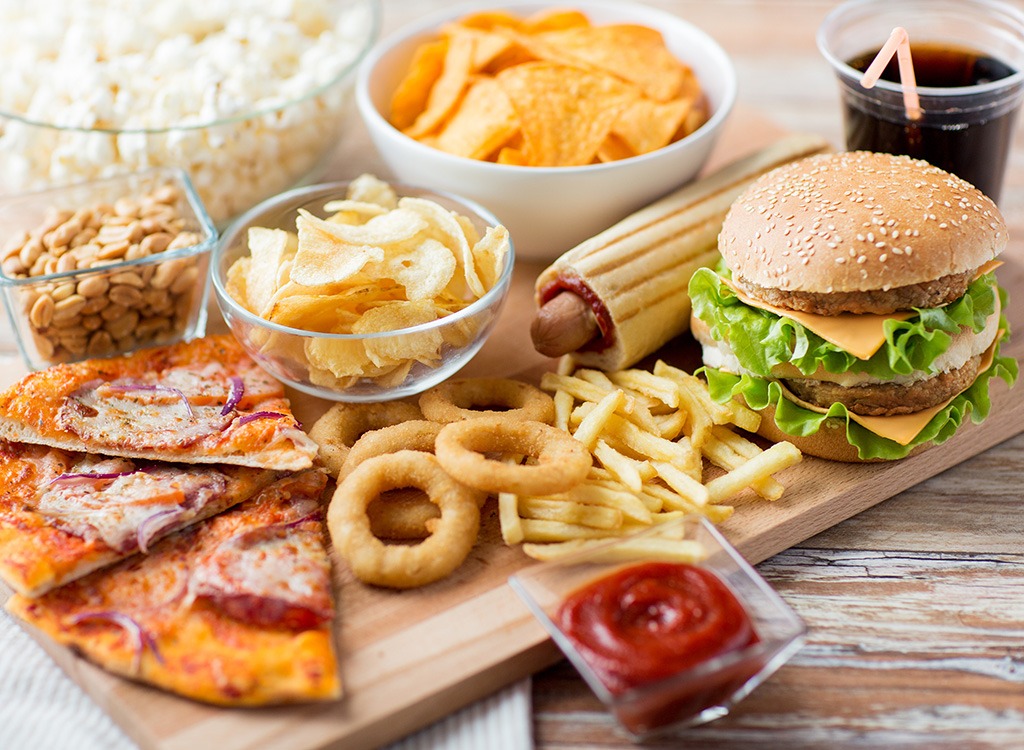 |
[TAG51]Easy to make full flavoured recipes. Life is too short for boring food! |
 |
[TAG52]This vibrant lemony broccoli pesto pasta is quick and easy to make and full of fresh flavors. Your veggies, greens, and pasta…all in one gorgeous dish! ♡ We’re |
 |
[TAG53]This simple roasted carrot soup recipe is made with creamy tahini and topped with crispy za’atar chickpeas. Naturally gluten-free, vegetarian and vegan. If you |
 |
[TAG54]HEALTHY & KID-FRIENDLY MEALS easy dinner recipes made in minutes. The Latest Recipes st. Patrick's Day Recipes Hello! I'm Sara! Welcome to Dinner at the Zoo! |
 |
[TAG55]My longtime favorite flourless cake recipe is decadently rich and delicious, naturally gluten-free, and easy to make in under 1 hour! Trust me, this flourless |
 |
[TAG56]This vegetarian cabbage roll soup is filled with protein-rich lentils and all of the delicious flavors you love from traditional cabbage rolls. Naturally |
 |
[TAG57]From comfort foods to indulgent dishes browse hundreds of recipes that your family will love and make over and over again. Cooking Classy has never been easier, |
 |
[TAG58]These zesty roasted sweet potato and chickpea bowls are layered with sautéed spinach and brown rice and tossed with my favorite 4-ingredient chipotle tahini |
 |
[TAG59]This classic matcha latte recipe is easy to make and customize to your liking and always so delicious. The older I get, the more I’m convinced that one of |
 |
[TAG60]A family food blog with hundreds of simple, tested and approved recipes. Find easy step-by-step photo cooking instructions and video recipes. |
 |
[TAG61]This veggie-loaded broccoli cheese soup recipe is perfectly velvety and creamy without using heavy cream. Instant Pot, Crock-Pot and stovetop options all |
 |
[TAG62]This winter farro salad recipe is made with the most delicious blend of seasonal fruit, greens, nuts, crumbled cheese and tossed with a vibrant orange ginger |
 |
[TAG63]find out hundres of delicous food recipes |
 |
[TAG64]This lovely white wine sautéed mushrooms recipe is quick and easy to make, full of rich savory flavors, and can pair well as a side dish with many different |
 |
[TAG65]This traditional Swedish meatballs recipe is bursting with rich, savory flavors and topped with a creamy gravy. Always so comforting served over mashed |
 |
[TAG66]The food blog with mostly healthy recipes made with real, whole foods inspiring more people to get into the kitchen and cook something good. |
 |
[TAG67]This classic Irish coffee recipe is easy to make with 4 ingredients in just a few minutes. Always so warm and cozy! Let’s warm up with a hot mug of Irish |
 |
[TAG68]A food blog with hundreds of quick and easy dinner recipes. Classics done right, incredible one pot recipes, Asian takeout at home and holiday feasting! |
.png)





